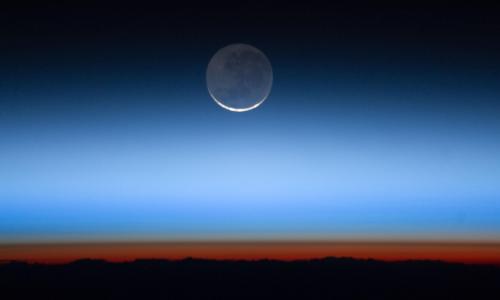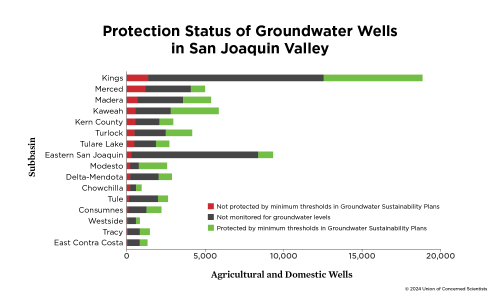Table of Contents
Human activities cause ozone depletion and global warming
Ozone (O3) depletion does not cause global warming, but both of these environmental problems have a common cause: human activities that release pollutants into the atmosphere altering it.
Global warming is caused primarily by putting too much carbon dioxide into the atmosphere when coal, oil, and natural gas are burned to generate electricity or to run our cars.
Carbon dioxide spreads around the planet like a blanket, and is one of the main gases responsible for the absorption of infrared radiation (felt as heat), which comprises the bulk of solar energy.
Ozone depletion occurs when chlorofluorocarbons (CFCs) and halons—gases formerly found in aerosol spray cans and refrigerants—are released into the atmosphere (see details below).
Ozone sits in the upper atmosphere and absorbs ultraviolet radiaton, another type of solar energy that's harmful to humans, animals and plants. CFCs and halons cause chemical reactions that break down ozone molecules, reducing ozone's ultraviolet radiation-absorbing capacity.
How ozone works
The sun emits electromagnetic radiation at different wavelengths, meaning energy at different intensities. The atmosphere acts like a multi-layer shield that protects Earth from dangerous solar radiation.
Ozone is found in two different parts of our atmosphere. Ground level or “bad” ozone is a human health irritant and component of smog. It is found in the lower atmosphere (troposphere) and has nothing to do with the "ozone hole."
High level or “good” ozone occurs in the stratosphere and accounts for the vast majority of atmospheric ozone.
The stratospheric ozone layer absorbs ultraviolet (UV) radiation, preventing dangerous UV rays from hitting Earth's surface and harming living organisms. UV rays cannot be seen or felt, but they are very powerful and change the chemical structure of molecules.
UV radiation plays a small role in global warming because its quantity is not enough to cause the excess heat trapped in the atmosphere. UV radiation represents a small percentage of the energy from the sun, and is not highly absorbed or scattered in the atmosphere—especially when compared with other wavelengths, like infrared. But, ozone depletion is also concerning because it directly impacts the health of humans, and other living organisms.
The ozone hole
The term ‘ozone hole’ refers to the depletion of the protective ozone layer in the upper atmosphere (stratosphere) over Earth's polar regions. People, plants, and animals living under the ozone hole are harmed by the solar radiation now reaching the Earth's surface—where it causes health problems, from eye damage to skin cancer.
Stratospheric ozone is constantly produced by the action of the sun's ultraviolet radiation on oxygen molecules (known as photochemical reactions). Although ozone is created primarily at tropical latitudes, large-scale air circulation patterns in the lower stratosphere move ozone toward the poles, where its concentration builds up.
In addition to this global motion, strong winter polar vortices are also important to concentrating ozone at the poles. During the continuously dark polar winter, the air inside the polar vortices becomes extremely cold, a necessary condition for polar stratospheric cloud formation.
Polar stratospheric clouds create the conditions for drastic ozone destruction, providing a surface for chlorine to change into ozone-destroying form. They generally last until the sun comes up in the spring.
In the 1980s, scientists discovered that the ozone layer was thinning in the lower stratosphere, with particularly dramatic ozone loss—known as the "ozone hole"—in the Antarctic spring (September and October).
Scientists also discovered that the thinning in the ozone layer was caused by increasing concentrations of ozone-depleting chemicals – chlorofluorocarbons or CFCs (compounds with chlorine and/or fluorine attached to carbon) and to a lesser extent halons (similar compounds with bromine or iodine). These chemicals can remain in the atmosphere for decades to over a century.
At the poles, CFCs attach to ice particles in clouds. When the sun comes out again in the polar spring, the ice particles melt, releasing the ozone-depleting molecules from the ice particle surfaces.
Once released, these ozone-destroying molecules do their dirty work, breaking apart the molecular bonds in UV radiation-absorbing ozone.
The Montreal Protocol
CFCs were commonly found in refrigerants, solvents, propellants, and foam-blowing agents before the Montreal Protocol was agreed on in the 1980s– an international commitment to phase out ozone-depleting chemicals that was universally ratified by all countries that participate in the UN.
The Montreal Protocol set an important precedent but more needs to be done. It appears unlikely that the decrease in ozone-depleting substances alone will lead to the recovery of the stratospheric ozone layer to its pre-1980 concentration levels because of the competing and uncertain effects of further climate change.
In a worrying development, after an extremely cold winter in early 2011, for the first time the ozone reduction in the Arctic was comparable to that in the Antarctic.
Stratospheric ozone also has natural processes that remove it from the atmosphere. Tiny sulfate particles (aerosols) blasted into the stratosphere by the volcanic eruption of Mount Pinatubo in 1991 caused measurable decreases in ozone for several years following the eruptions.
Does global warming have an impact on the stratospheric ozone layer?
Since the 1960s, there has been a trend of increasing warming of the lower atmosphere and a cooling of the upper atmosphere. This warming-cooling dynamic creates conditions that lead to ozone loss.
Observations show that as greenhouse gases increase and result in heating in the lower atmosphere (troposphere), a cooling is occurring in the upper atmosphere (stratosphere). Largely because heat from Earth's surface that normally would convey through the troposphere and stratosphere, and eventually escape to space, is now being trapped (or confined to the troposphere).
The increasing temperatures at the Earth's surface and decreasing temperatures in higher parts of the atmosphere can be partly explained using the blanket analogy.
Carbon dioxide and other heat-trapping gases rise into the atmosphere and spread around the globe, like a blanket wrapping Earth. This blanket warms the surface of the Earth and protects it from the cold air above it.
The increased concentrations of heat-trapping gases make the blanket uncomfortably thicker. Wrapped now in a thicker blanket, Earth’s surface warms up, heats the blanket itself, and traps more heat in the lower atmosphere.
The blanket also prevents heat from moving from the lower atmosphere to the stratosphere, cooling down the stratosphere as a result.
In other words, heat-trapping gases contribute to creating the cooling conditions in the atmosphere that lead to ozone depletion. Greenhouse gases absorb heat at relatively low altitudes and warm the surface--but they have the opposite effect in higher altitudes because they prevent heat from rising.
In a cooler stratosphere, ozone loss creates a cooling effect that results in further ozone depletion. UV radiation releases heat into the stratosphere when it reacts with ozone. With less ozone there is less heat released, amplifying the cooling in the lower stratosphere, and enhancing the formation of ozone-depleting polar stratospheric clouds, especially near the South Pole.




